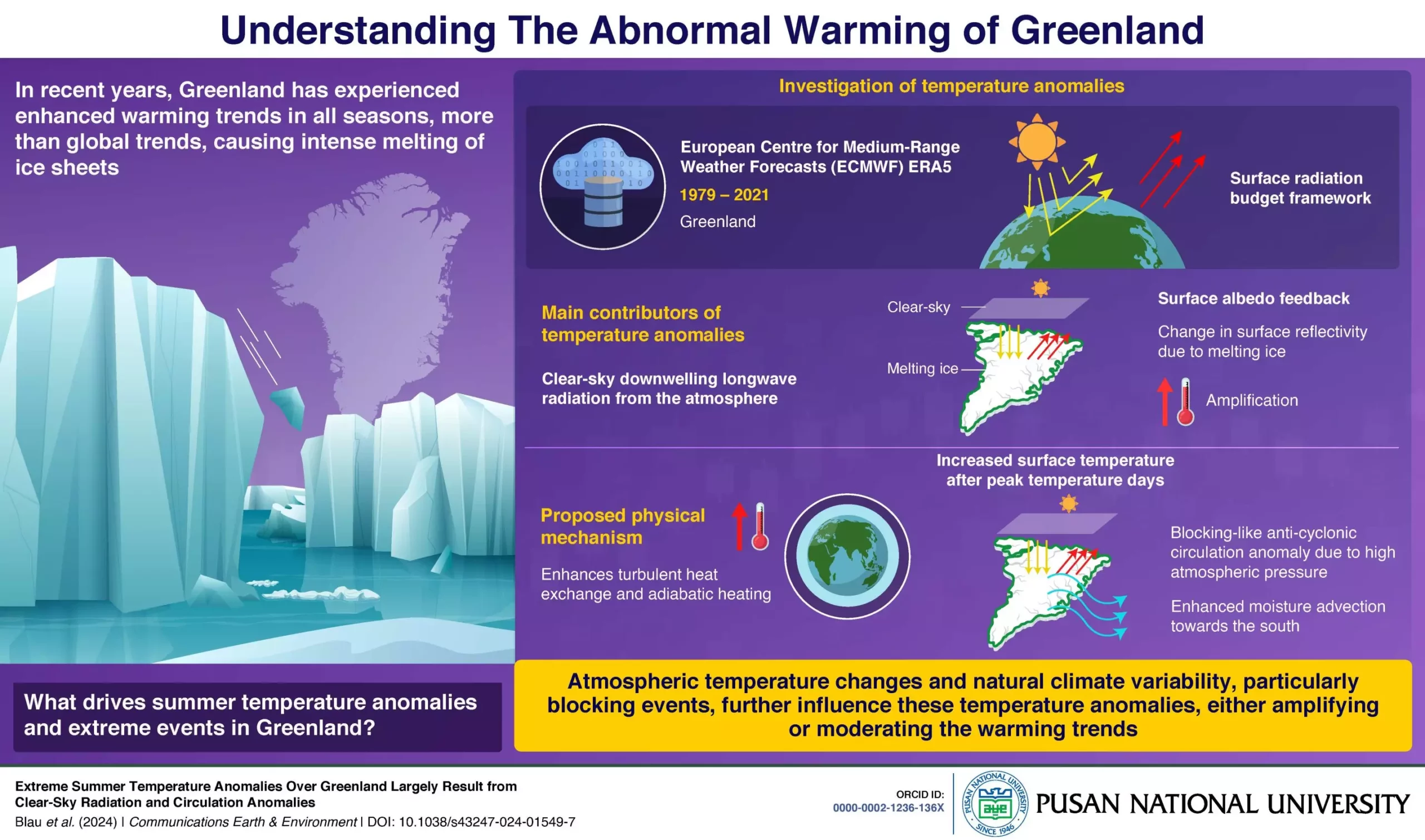Global warming, a consequence of human activities, has resulted in rising temperatures worldwide. However, the rate of warming in Greenland has far exceeded the global average, leading to accelerated ice sheet melting. This phenomenon, known as Arctic Amplification, poses a significant threat to coastal areas and ecosystems globally due to the potential rise in sea levels. Understanding the underlying drivers behind this intensified warming in the northern regions is crucial for predicting future climate impacts.
Previous studies have attributed Arctic Amplification to various factors, including local climate feedback processes, heat release from the Arctic Ocean, and energy transport from the south. In addition, melting sea ice during summers further contributes to warming trends through surface albedo feedback, where less ice leads to less sunlight being reflected into space. The Greenland blocking index, a climate mode indicating the strength of high-pressure blocking conditions over Greenland, has also been linked to temperature trends in the region. Despite these known factors, past studies have predominantly focused on overall warming trends, overlooking the specific causes of extreme year-to-year temperature events.
To address these research gaps, Professor Kyung-Ja Ha and her team from Korea conducted a study focusing on the year-to-year perturbations of the surface energy budget to explain Greenland’s extreme temperature variations. Published in Communications Earth & Environment, the researchers employed a surface energy budget framework to separate the contributions of radiative and non-radiative sources in analyzing temperature anomaly events over Greenland. Their findings highlighted the significant role of clear-sky downwelling longwave radiation and surface albedo feedback as the primary factors driving Greenland’s surface warming.
The researchers delved deeper into the mechanism behind the increase in clear-sky radiation, identifying atmospheric temperature as the primary driver. In warm years, the combination of elevated surface temperatures and tropospheric warming led to turbulent heat exchange between the atmosphere and the surface. This process facilitated moisture transport from the south to Greenland, forming a high-pressure system that trapped and sustained warm conditions. The resulting intense ice melting created a feedback loop that further amplified the warming effects, emphasizing the intricate role of atmospheric dynamics in driving Greenland’s accelerated warming.
Moreover, the study highlighted the influence of different modes of natural climate variability, particularly those associated with the blocking index, in either intensifying or mitigating warming trends. These natural fluctuations can lead to extreme temperature events, further accentuating the impact of natural variability on Greenland’s climate. As Prof. Ha notes, understanding the interplay between natural variability and human-induced climate change is crucial for projecting future developments in Greenland’s ice sheet and implementing strategies to mitigate further degradation.
By shedding light on the drivers of Greenland’s extreme summer temperatures, this study provides valuable insights that can inform future climate projections and conservation efforts. Understanding the complex interactions between atmospheric dynamics, natural variability, and human-induced climate change is essential for addressing the urgent challenges posed by Greenland’s accelerated warming.


Leave a Reply